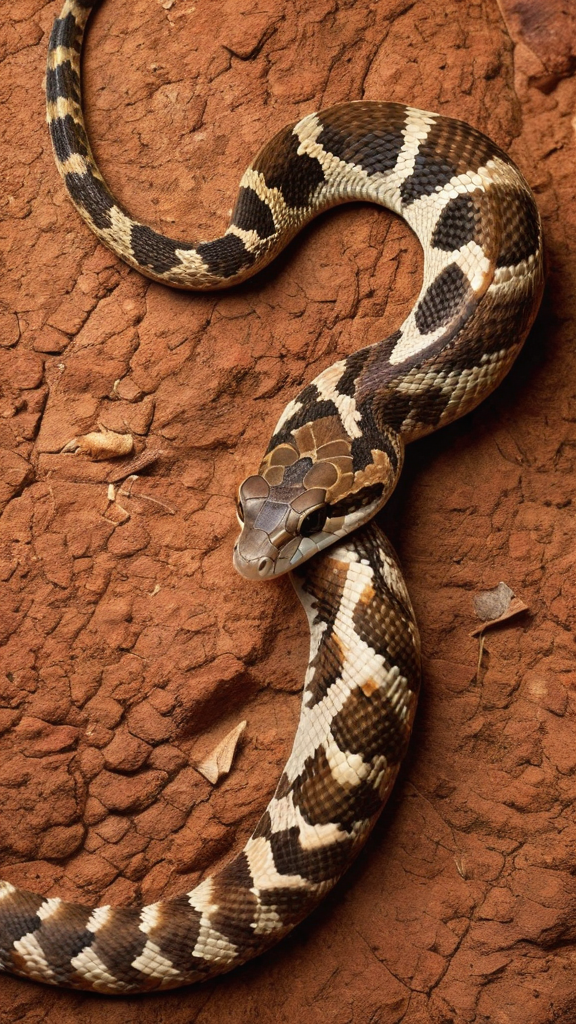The Best Fluffy Pancakes recipe you will fall in love with. Full of tips and tricks to help you make the best pancakes.

Young Rattlesnake: What To Spot! 🐍
Identifying Young Rattlesnakes: Key Features and Characteristics
Spotting a young rattlesnake can be fascinating yet intimidating. These snakes have unique characteristics that set them apart from other species. Understanding how to identify them not only helps nature enthusiasts appreciate these creatures but also enhances safety for those living in areas where rattlesnakes are common.
Young rattlesnakes are often mistaken for other snakes due to their size and appearance. Here are some key features and characteristics to look for:
Coloration and Patterns
Young rattlesnakes typically exhibit distinctive colors and patterns that help them blend into their surroundings. Here’s what to focus on:
Discover the secrets to aging gracefully and living life to the fullest with “Age Slower”
- Base Color: Young rattlesnakes usually have a light brown or gray base color that helps them camouflage in natural settings.
- Patterns: Look for dark brown or black markings that run along their bodies. These patterns can either be banded or blotched.
- Tail: The tail of a young rattlesnake is usually more colorful than the rest of the body. It may display vibrant hues, which serve as a warning signal to potential predators.
Size and Shape
Young rattlesnakes are relatively small compared to their adult counterparts. Here are some details to keep in mind:
- Length: Typically, young rattlesnakes measure around 10 to 20 inches long when they are born. They grow significantly over time, but this smaller size can make identification easier.
- Body Shape: Their bodies are slender and elongated. Young rattlesnakes have a triangular head that is wider than their neck, a telltale sign of the species.
- Eyes: Young rattlesnakes have elliptical, cat-like pupils that enhance their vision, especially during twilight hours.
Rattle Development
Surprisingly, young rattlesnakes may not have a fully developed rattle. Understanding their rattle development is crucial:
Discover the secrets to aging gracefully and living life to the fullest with “Age Slower”
- Initial Development: When born, young rattlesnakes possess a “button” at the end of their tail rather than a traditional rattle. This button is the start of their rattle’s development.
- Growth of the Rattle: As they shed their skin, they will develop more segments on their rattle. Typically, rattlesnakes gain a new rattle segment after each shedding process, which can take a few weeks.
Habitat and Behavior
Young rattlesnakes are often found in certain habitats, and understanding where to spot them can be of great help:
- Preferred Environments: They usually inhabit areas like deserts, rocky hillsides, and grasslands, where they can camouflage easily.
- Activity Levels: Young rattlesnakes are often more active in the early morning or late evening, especially during warmer months.
- Hiding Spots: Look for them near bushes, rocks, or logs, where they may be resting or hunting for prey.
Safety Tips When Spotting Young Rattlesnakes
If you find yourself in rattlesnake territory, keep these tips in mind:
Discover the secrets to aging gracefully and living life to the fullest with “Age Slower”
- Keep your distance: Always maintain a safe distance if you spot one. Respect its space.
- Wear boots: If hiking in areas known for rattlesnakes, wearing boots can protect your feet.
- Stay calm: If you encounter a rattlesnake, avoid sudden movements. Most will retreat if left alone.
Table of Key Identifiers
| Feature | Description |
|---|---|
| Base Color | Light brown or gray |
| Patterns | Dark brown or black markings |
| Tail | Bight with a button instead of a full rattle |
| Length | 10 to 20 inches |
| Habitat | Deserts, rocky areas, and grasslands |
Being able to identify young rattlesnakes is vital for anyone who spends time in their natural habitats. Their unique features and behaviors make them extraordinary yet dangerous creatures. By recognizing these key characteristics, you can appreciate them while ensuring your safety.
Safety Tips and Precautions When Encountering Young Rattlesnakes
Encountering a young rattlesnake can be a startling experience, especially if you are not familiar with these fascinating creatures. Young rattlesnakes, often mistaken for their non-venomous counterparts, can pose a danger due to their bite. Knowing how to recognize and react to a young rattlesnake can make all the difference in ensuring your safety. Below are some crucial safety tips and precautions to keep in mind when you’re in rattlesnake territory.
Recognizing a Young Rattlesnake
Young rattlesnakes have distinctive physical features that can help you identify them. Here are some key characteristics:
Discover the secrets to aging gracefully and living life to the fullest with “Age Slower”
- Coloration: They often have bright, vivid coloration, typically brown, gray, or tan with darker bands or splotches.
- Size: Young rattlesnakes are smaller than adults. They can measure anywhere from 12 to 24 inches long.
- Rattle: Juvenile rattlesnakes may have a rudimentary rattle or none at all. Their rattle appears segmental and less pronounced compared to adult rattlesnakes.
- Head Shape: Like adults, young rattlesnakes have a triangular head that can help distinguish them from non-venomous snakes.
Be Mindful of Your Surroundings
When wandering in areas known to harbor rattlesnakes, awareness is your best defense. Here are some strategies to ensure your safety:
- Stay on Trails: Stick to well-trodden paths while hiking. Rattlesnakes prefer to rest in tall grasses, under bushes, or within rocks.
- Avoid Reaching or Stepping Blindly: If you have to navigate through thick vegetation, use a walking stick to probe ahead and avoid stepping directly into potential snake territory.
- Look Before You Leap: Before sitting or placing your hands anywhere, visually inspect the area for any signs of snakes.
Reacting to a Rattlesnake Encounter
It’s essential to stay calm if you encounter a young rattlesnake. Here’s how to respond safely:
Discover the secrets to aging gracefully and living life to the fullest with “Age Slower”
- Stay Still: Young rattlesnakes might perceive movement as a threat. Staying still allows the snake to navigate away from you.
- Back Away Slowly: Move back carefully without turning your back on the snake. Make sure you maintain a safe distance.
- Do Not Provoke: It’s crucial not to attempt to touch, capture, or provoke the snake. This could lead to a bite.
Precautions While Camping or Hiking
When spending extended periods in the wilderness, adopting preventive measures is vital:
| Precaution | Description |
|---|---|
| Keep Your Campsite Tidy | Make sure your campsite is clean and free of food scraps and debris that might attract rodents, which in turn attract snakes. |
| Wear Protective Footwear | Sturdy boots can provide protection against snake bites. Always opt for closed shoes with high tops. |
| Use a Flashlight | A flashlight is essential when walking at night, helping you see where you’re stepping and avoid any hazardous encounters. |
What to Do if Bitten
In the worst-case scenario of a rattlesnake bite, knowing how to react can save your life:
Discover the secrets to aging gracefully and living life to the fullest with “Age Slower”
- Stay Calm: Try to remain as calm as possible to slow the spread of venom.
- Limit Movement: Keep the affected limb immobile and at or below heart level.
- Seek Immediate Medical Attention: Call for help or get to a hospital as soon as possible. Time is critical.
Being informed and taking precautions can significantly reduce the risk of a dangerous encounter with a young rattlesnake. The key to safety lies in respect—respect for wildlife and understanding your surroundings. By following these guidelines, you can enjoy nature while keeping both yourself and the snakes safe.
Conclusion
Spotting a young rattlesnake can be both thrilling and nerve-wracking. By understanding their key features and characteristics, you can identify these reptiles with ease. Young rattlesnakes typically display vibrant colors and patterns, which can often be deceptive due to their size. Remember, these snakes might not have developed their rattles yet, making them harder to spot. Look for their slender bodies, triangular heads, and distinctive markings, which will help in recognizing them in their natural habitat.
Safety is paramount when you encounter a young rattlesnake. Always remain calm and avoid sudden movements. Keep a safe distance and do not attempt to pick them up or provoke them. If you’re hiking or exploring areas where these snakes dwell, wearing sturdy boots and long pants can offer an extra layer of protection. Additionally, remaining vigilant and watching where you step or place your hands will help prevent accidental encounters.
Discover the secrets to aging gracefully and living life to the fullest with “Age Slower”
Ultimately, respecting these creatures and their environment ensures your safety as well as theirs. Young rattlesnakes play an integral role in maintaining the ecosystem. By learning to identify them and understanding how to react when you come across one, you can enjoy nature while staying safe. Remember, awareness and respect are the best tools in your toolkit when dealing with any wildlife. Keep exploring, and always carry these tips in your mind as you venture into rattlesnake territory. Stay safe and enjoy the beauty of nature!

